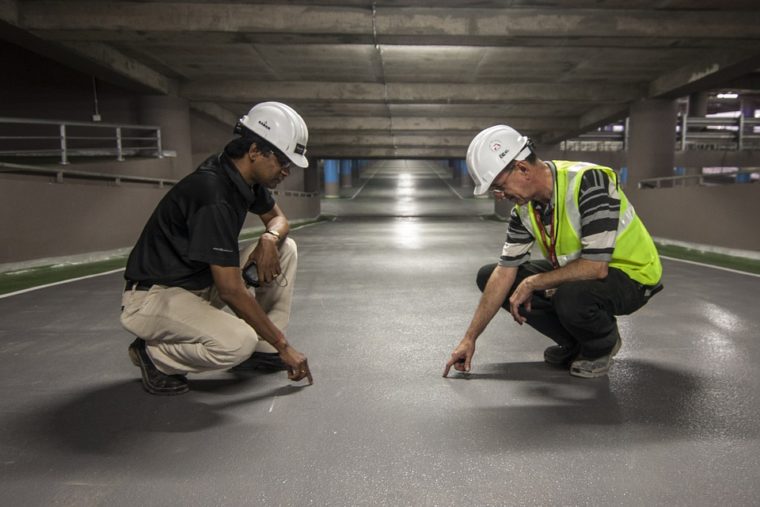
There are many ways to identify upcoming contracting opportunities in the public sector marketplace, but one of the most reliable ways is to track feasibility studies. Environmental impact statements also are precursors to the launch of large projects.
Here are some efforts that should be of high interest to government contractors.
The Capital Area Road and Bridge District in Baton Rouge, Louisiana, has secured $5 million to complete an environmental impact study related to the development of a new Mississippi River span. The new bridge project’s cost has been estimated to be at least $1 billion. The study will include a needs assessment, more reliable cost estimates, traffic and toll revenue projections, and required state and federal permits. It will also include environmental impact data related to noise and air quality issues, surveys of endangered species that could be impacted, and a community impact assessment.
 Maine’s governor recently signed a bill calling for a feasibility study related to the creation of a consumer-owned electric utility plant. This project would be extremely large, and it would be designed to replace Maine’s two largest electric utilities. The completed study will be presented to the legislature by February of 2020. If the project moves forward — and most believe it will — it could cost between $7 billion to $9 billion just to purchase the two investor-owned utilities. The state’s Public Utility Commission will oversee the hiring of a consulting firm for the project that will include an analysis of the short- and long-term costs and benefits of the project as well as an examination of legal, regulatory, technical, financial, and operational issues.
Maine’s governor recently signed a bill calling for a feasibility study related to the creation of a consumer-owned electric utility plant. This project would be extremely large, and it would be designed to replace Maine’s two largest electric utilities. The completed study will be presented to the legislature by February of 2020. If the project moves forward — and most believe it will — it could cost between $7 billion to $9 billion just to purchase the two investor-owned utilities. The state’s Public Utility Commission will oversee the hiring of a consulting firm for the project that will include an analysis of the short- and long-term costs and benefits of the project as well as an examination of legal, regulatory, technical, financial, and operational issues.
The New Jersey Legislature has authorized a study related to realigning incarceration facilities for prison inmates. State officials believe that restructuring living facilities for prisoners could save as much as $40 million annually for taxpayers. A consulting firm will be hired to conduct a feasibility study and the commissioner of the Department of Corrections will oversee a plan to restructure correctional facilities beginning in 2020.
Officials at the city of Mission, Texas, recently budgeted $5 million to hire a consulting firm to conduct an environmental assessment and rail-focused feasibility study related to the Madero bridge project. In 1978, the U.S. State Department authorized the city to build an international rail and vehicle bridge, but Mission officials aborted the project after a vehicle bridge study determined toll revenues would be unlikely to cover the city’s investment. However, councilmembers now want to add rail use to the bridge. The budget also will fund similar analysis on the Mexican side of the Madero crossing. This project could possibly be delivered through a public-private partnership.
It appears that the Sacramento Zoo may soon have a new home. The City Council unanimously approved funding for an in-depth feasibility study related to relocating the zoo. The study will provide an evaluation of potential new locations sites and also analyze investments, business operations, accreditation requirements, and more. If a decision is made to relocate the zoo, the project will be large. If a decision is made not to relocate the zoo, there will be numerous contracting opportunities because expansions will be required.
A planning study has been authorized by Virginia’s Commonwealth Transportation Board that will focus on the possible expansion of an Amtrak train platform in Bedford so that passengers can be picked up. Residents there say the state is expected to spend $1.5 billion for rail projects, and Bedford wants a share of that. They contend that a train stop at this location would likely add 12,000 additional passengers.
City officials in Trinidad, California, are struggling with water resource issues that are very similar to issues and concerns troubling many other cities. A study has been approved to analyze the city’s immediate and future water resource needs. Councilmembers say such a study is required for future planning. It may also be a precautionary move before city officials sign off on a major hotel development that would also rely on the city’s water supply. The study will include an assessment of current water sources, potential alternative water sources, and policies to address potential droughts in the future.
All types of large projects require very detailed studies. Contractors interested in specific types of projects should definitely monitor feasibility planning and environmental studies.
